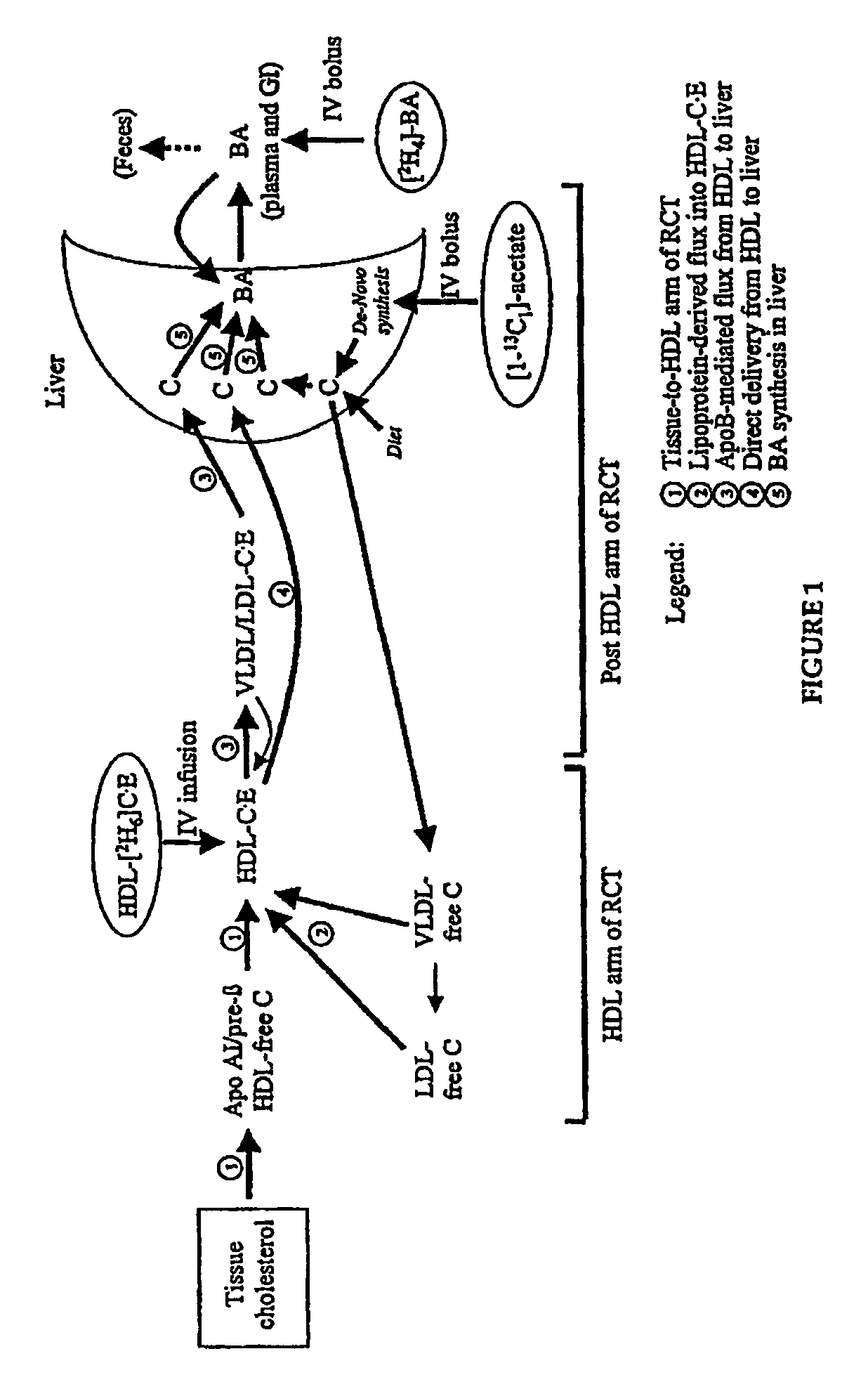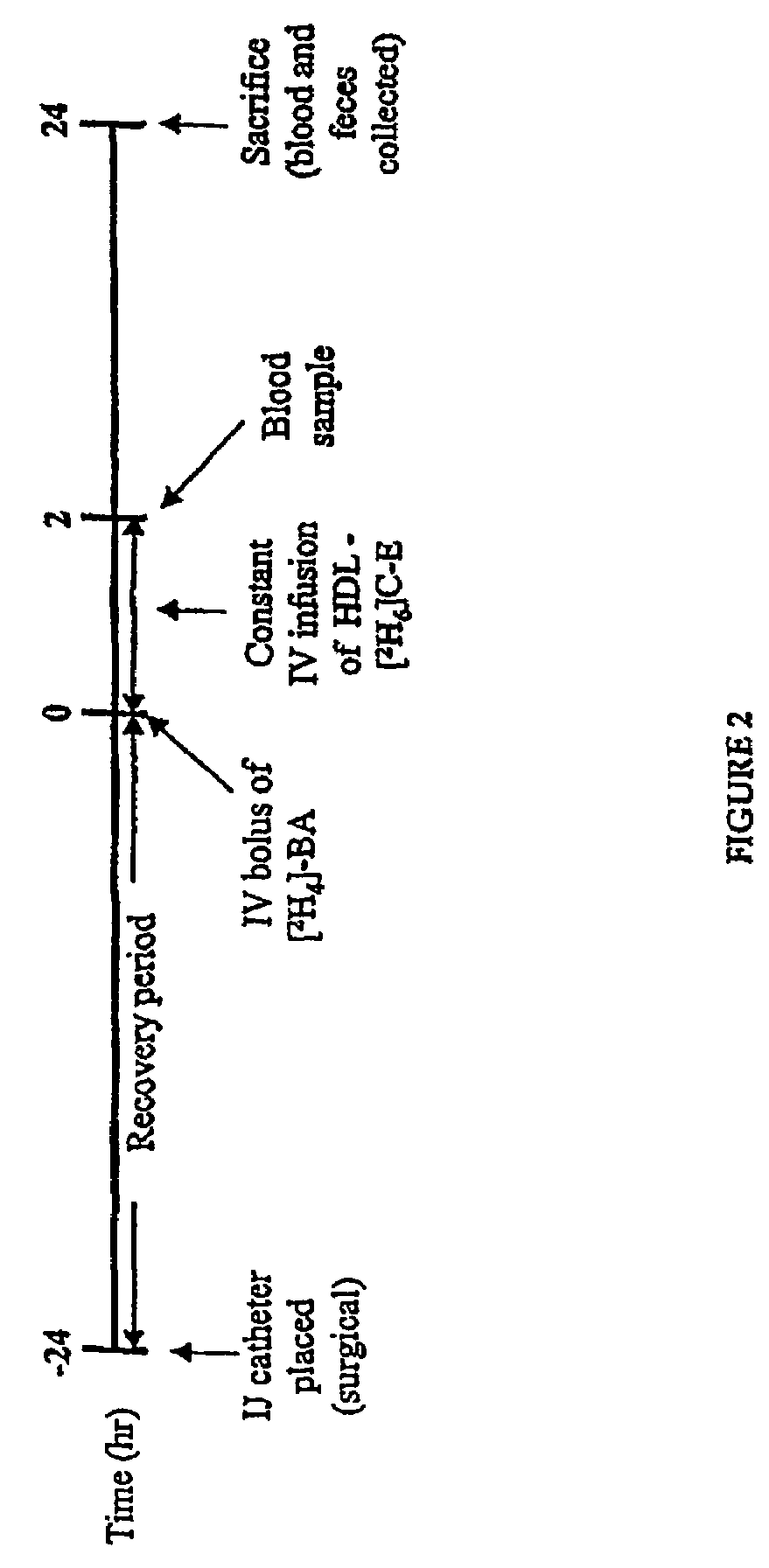Methods for measuring rates of reserve cholesterol transport in vivo, as an index of anti-atherogenesis
a reserve cholesterol and rate technology, applied in the field of cholesterol metabolism, can solve the problems of difficult to measure the rate of a biochemical process such as rct, no known method for measuring the rate of cholesterol flow, and difficult to measure the concentration of biochemical molecules
- Summary
- Abstract
- Description
- Claims
- Application Information
AI Technical Summary
Benefits of technology
Problems solved by technology
Method used
Image
Examples
example 1
Measurement of Reverse Cholesterol Transport in an Animal Model
[0119]FIG. 2 shows an experimental protocol that is used in an experiment involving an animal model, such as a rat model. Infusion catheters are surgically placed in the jugular vein of rats which are then allowed to recover for 24 hours. An IV bolus of [2H4]-BA and [1-13C1]-acetate is given followed by constant IV infusion of HDL-[2H6]C-E (cholesterol ester). Blood samples are obtained after 2 hours and at sacrifice 24 hours later. At sacrifice, feces are also collected.
[0120]Cholesterol from blood and fecal samples is then obtained. In each sample, the cholesterol is then derivatized to its TMS derivative and measured by mass spectrometry. The rate of the first arm of reverse cholesterol synthesis is calculated.
example 2
Measuring Reverse Cholesterol Transport in a Murine Model
[0121]FIG. 2 shows an experimental protocol that is used in an experiment involving an animal model, such as a rat model. Infusion catheters are surgically placed in the jugular vein of rats which are then allowed to recover for 24 hours. An IV bolus of [2H4]-BA and [1-13C1]-acetate is given followed by constant IV infusion of HDL-[2H6]C-E (cholesterol ester). Blood samples are obtained after 2 hours and at sacrifice 24 hours later. At sacrifice, feces are also collected.
[0122]Cholesterol from blood and fecal samples is then obtained. In each sample, the cholesterol is then derivatized to its TMS derivative and measured by mass spectrometry. The bile acid is also obtained, derivatized, and measured by mass spectrometry. The rate of the first arm of reverse cholesterol transport is calculated based on the cholesterol measurement. The rate of the second arm of reverse cholesterol is calculated based on the bile acid measurement....
PUM
| Property | Measurement | Unit |
|---|---|---|
| natural abundance | aaaaa | aaaaa |
| density | aaaaa | aaaaa |
| mass spectroscopy | aaaaa | aaaaa |
Abstract
Description
Claims
Application Information
 Login to View More
Login to View More - R&D
- Intellectual Property
- Life Sciences
- Materials
- Tech Scout
- Unparalleled Data Quality
- Higher Quality Content
- 60% Fewer Hallucinations
Browse by: Latest US Patents, China's latest patents, Technical Efficacy Thesaurus, Application Domain, Technology Topic, Popular Technical Reports.
© 2025 PatSnap. All rights reserved.Legal|Privacy policy|Modern Slavery Act Transparency Statement|Sitemap|About US| Contact US: help@patsnap.com



